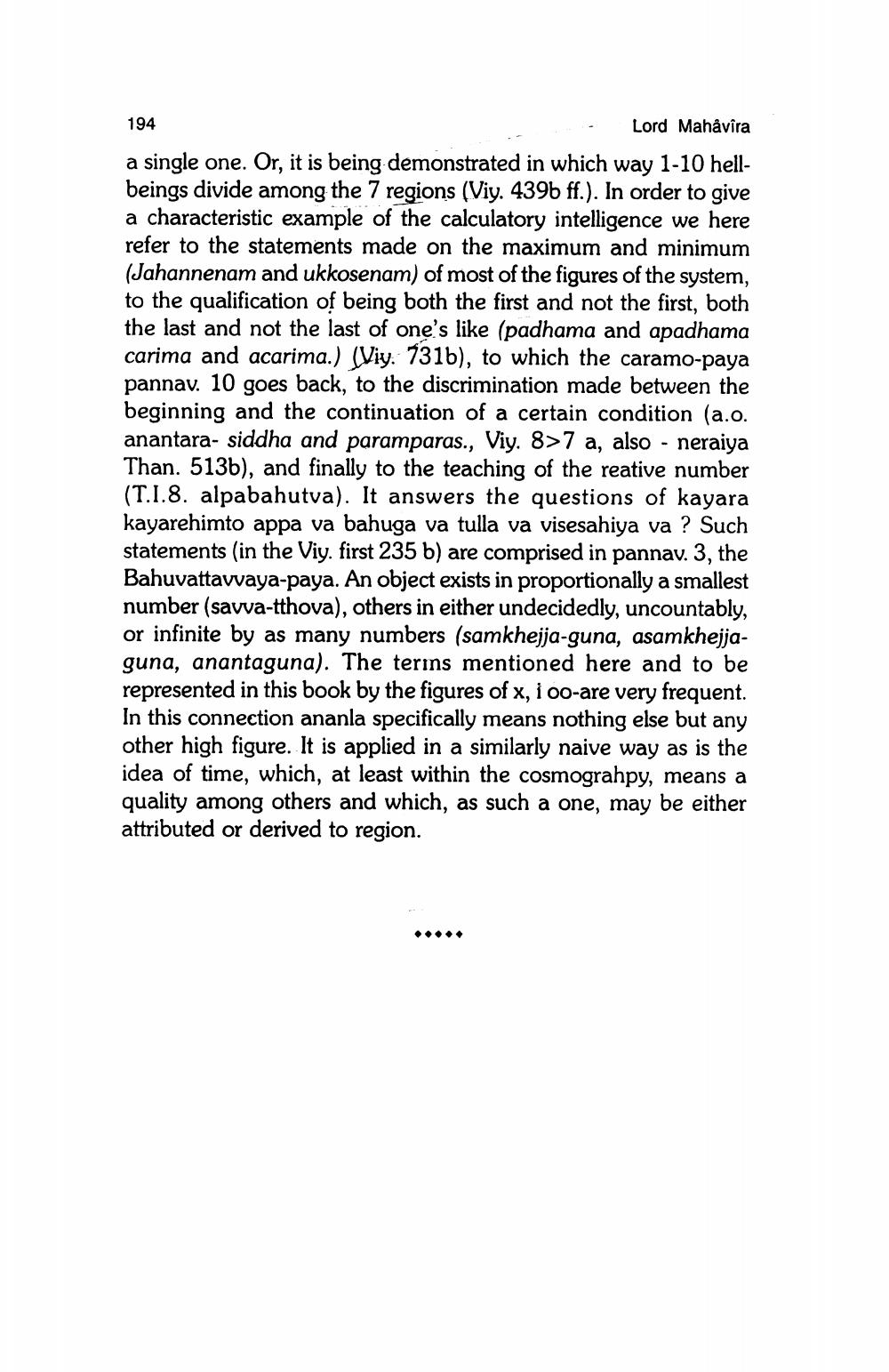________________
194
Lord Mahåvira a single one. Or, it is being demonstrated in which way 1-10 hellbeings divide among the 7 regions (Viy. 4396 ff.). In order to give a characteristic example of the calculatory intelligence we here refer to the statements made on the maximum and minimum (Jahannenam and ukkosenam) of most of the figures of the system, to the qualification of being both the first and not the first, both the last and not the last of one's like (padhama and apadhama carima and acarima.) (Viy. 731b), to which the caramo-paya pannav. 10 goes back, to the discrimination made between the beginning and the continuation of a certain condition (a.o. anantara- siddha and paramparas., Viy. 8>7 a, also - neraiya Than. 513b), and finally to the teaching of the reative number (T.1.8. alpabahutva). It answers the questions of kayara kayarehimto appa va bahuga va tulla va visesaniy
va bahuga va tulla va visesahiya va ? statements (in the Viy. first 235 b) are comprised in pannav. 3, the Bahuvattavvaya-paya. An object exists in proportionally a smallest number (savva-tthova), others in either undecidedly, uncountably, or infinite by as many numbers (samkhejja-guna, asamkhejjaguna, anantaguna). The terins mentioned here and to be represented in this book by the figures of x, i oo-are very frequent. In this connection ananla specifically means nothing else but any other high figure. It is applied in a similarly naive way as is the idea of time, which, at least within the cosmograhpy, means a quality among others and which, as such a one, may be either attributed or derived to region.




